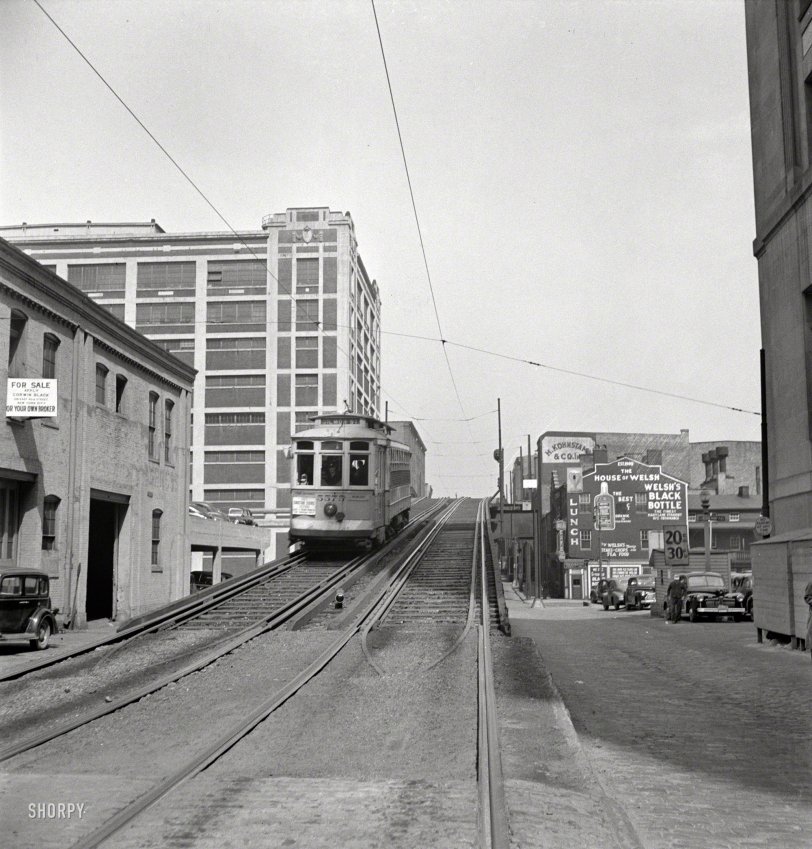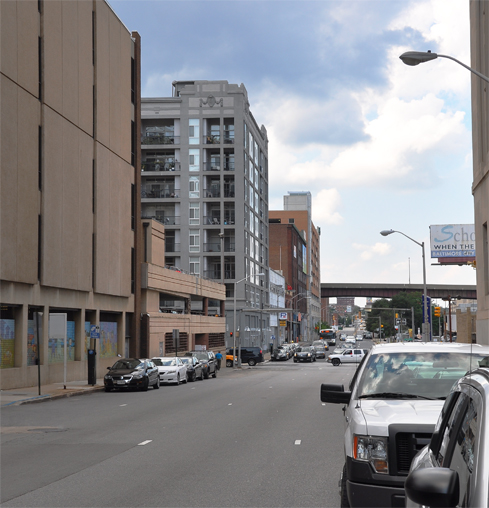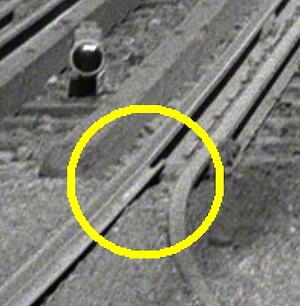


Framed or unframed, desk size to sofa size, printed by us in Arizona and Alabama since 2007. Explore now.
Shorpy is funded by you. Patreon contributors get an ad-free experience.
Learn more.

- Baldwin 62303
- Baldwin VO-1000
- Cold
- No expense spared
- Tough Guys
- Lost in Toyland
- And without gloves
- If I were a blindfolded time traveler
- Smoke Consumer Also Cooks
- Oh that stove!
- Possibly still there?
- What?!?
- $100 Reward
- Freeze Frame
- Texas Flyer wanted
- Just a Year Too Soon
- WWII -- Replacing men with women at the railroad crossing.
- Yes, Icing
- You kids drive me nuts!
- NOT An Easy Job
- I wonder
- Just add window boxes
- Icing Platform?
- Indiana Harbor Belt abides
- Freezing haze
- Corrections (for those who care)
- C&NW at Nelson
- Fallen Flags
- A dangerous job made worse
- Water Stop
Print Emporium
Charm City: 1943

April 1943. "Baltimore, Maryland. Elevated trolley." A restaurant, gas station, public transportation and booze all in one handy view. Photo by Marjory Collins for the Office of War Information. View full size.
+71
Below is the same view from July of 2014.

Girder rail
With all this talk of rail, no one mentioned the girder rail in the photo. I was initially surprised to see this here in 1943. While used forever across the pond, didn't think it was used widely here in the US at the time.

The classic semi-convertible
The car in the photo, no.5575 was one of a group built in 1914 by Brill in series 5560-5644 for United Railways & Electric. Between 1905 and 1919, United bought 885 semi-convertibles, all of them built by Brill or its subsidiaries Stephenson or Kuhlman. United also inherited a number of semi's from its predecessors.
The cars were called semi-convertibles because the window sashes could be raised out of the way to convert the car to an open car for Baltimore's hideous summers. The semi-convertibles saw service on all the Baltimore lines and some were still on Baltimore Transit's roster at the end of service in 1963.
The elevated structure was only about two thirds of a mile long and double tracked. It was built to cross over a stretch of Guilford Ave. that was already occupied by freight tracks of the Northern Central Ry. [PRR] The last car passed over Baltimore's elevated on Jan. 1, 1950.
Expensive premium gas
The gas prices shown are presumably for regular and premium. Note that the price for premium is 50% higher than the price for regular. If that were the case today, premium would be somewhere around $1.75 a gallon higher than regular. But difference typically actually seems to be 30 to 50 cents.
Extra rails
Your question is a good one. Those extra rails you see running parallel to the running rails was/still is a safety feature. When a train's wheel derail for whatever reason, the wheels fall into that slot thats created by the inner rail. It will prevent, in most cases, the train from going further sideways. On a trestle, you can see the advantages.
Re: Extra Rail
The extra rails are an attempt to keep derailed equipment from traveling into critical structures such as bridge truss supports, or falling off decks as shown. Depending on the track gauge, derailed equipment could travel four to five feet sideways before the wheels contacted another rail, enough to be a bigger problem than simply hitting the ground. They are curved at the beginning to guide derailed wheels back into a near correct path prior to critical structures, perhaps cheaper than using longer rail material and starting the extra rail sooner.
Guardrails.
They are called guardrails. Their purpose is to prevent a derailed piece of equipment from leaving the ties and falling off of an elevated structure. They are tapered at the beginning to pull an errant piece of equipment back on the ties prior to going onto an elevated structure or bridge. Also, they are called tracks, not lanes.
Guard rails
D A N- The extra set of rails on bridges and elevated sections of track are guard rails. If a train were to derail on one of these structures, the wheels would theoretically be kept between the rail and the guard rail, and keep it on the structure. They are curved or tapered (or commonly, actually joined at the centerline) at each end in case the engine(s) or car(s) are already "on the ground" when approaching the danger area.
Extra Rails
Can someone explain the extra set of rails that often show up between the regular rails on bridges. In this photograph they're quite clear on the right "lane". Why are they always curved at their start point?
Gas 5 gal/$
I remember my father complaining at the gas station when it went to .239
Guilford Avenue at Saratoga Street
House of Welsh
According to a Baltimore Sun article dated January 23, 1998, "The House of Welsh -- the aged downtown restaurant-bar where political deals were cut between slices of sizzling steak and shots of Maryland rye -- is closing next week."
The article went on to say that they didn't get many calls for rye whiskey anymore. Too bad they couldn't have held on a few more years. Rye has made a huge comeback recently. I wonder how "Welsh's Black Bottle" would stack up against some of today's ryes, like Bulleit or Knob Creek.
H. Kohnstamm & Co.
A bit of history, found here.
























On Shorpy:
Today’s Top 5